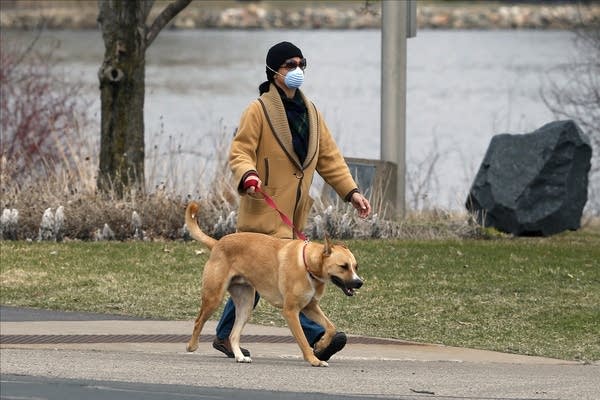April 7 update on COVID-19 in MN: 34 dead, 64 in ICU; Walz eyes 'refined' stay-home order

A woman wears a face mask as she walks around Normandale Lake with a dog Monday in Bloomington.
Jim Mone | AP
Go Deeper.
Create an account or log in to save stories.
Like this?
Thanks for liking this story! We have added it to a list of your favorite stories.


